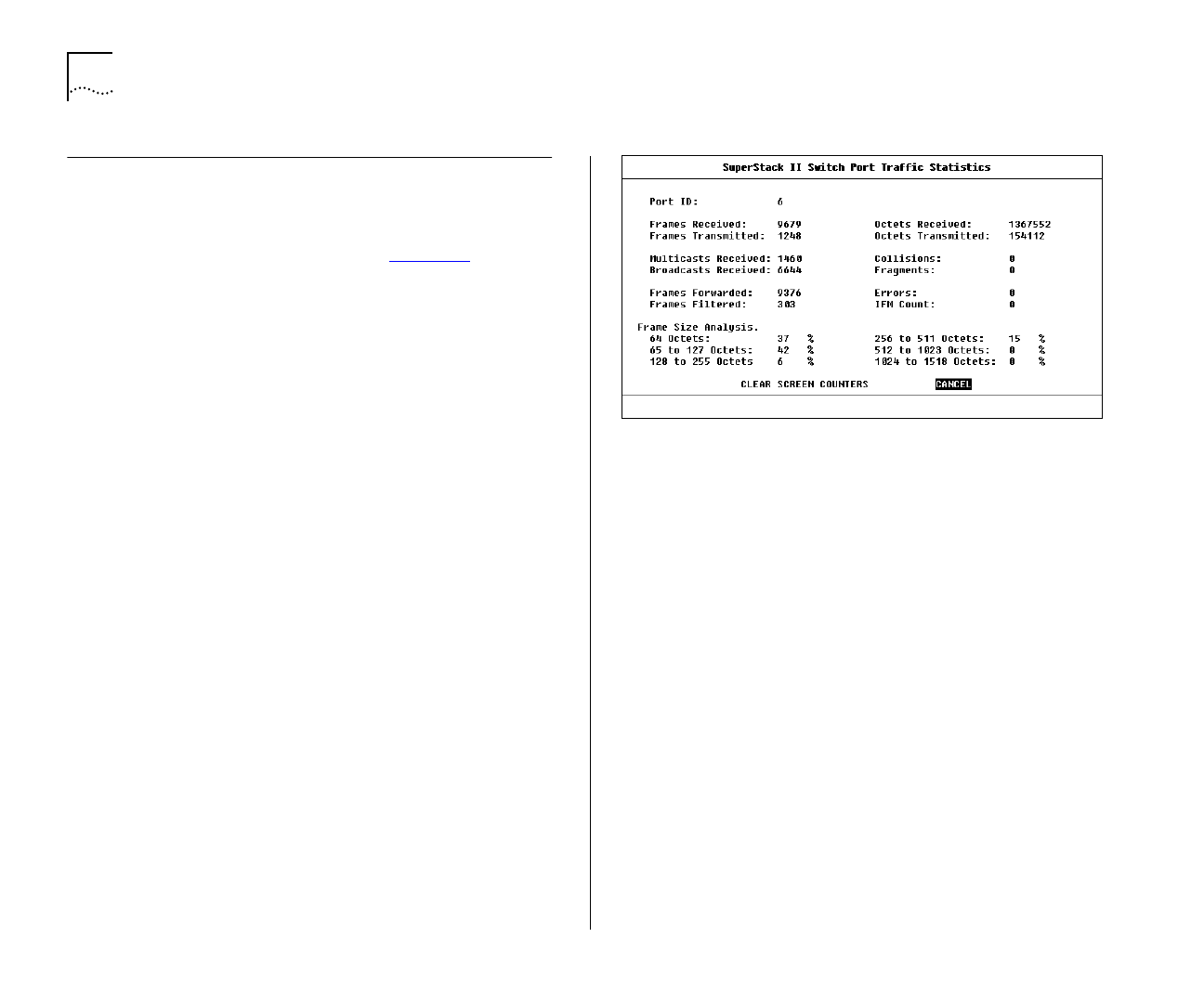
6-4 C
HAPTER
6: S
TATUS
M
ONITORING
AND
S
TATISTICS
Port Traffic Statistics
With the Port Statistics screen displayed, select the
TRAFFIC STATISTICS button. The Port Traffic Statistics
screen is displayed, as shown in Figure 6-3
.
The Port Traffic Statistics screen shows the follow-
ing:
Port ID
The ID of the port you are currently manag-
ing.
Frames Received
The number of valid frames
received by the port, including fragments and
frames with errors.
Frames Transmitted
The number of frames that
have been successfully transmitted by the port,
including fragments and frames with errors.
Octets Received
The number of octets received by
the port. The calculation includes the MAC header
and Cyclical Redundancy Check (CRC), but excludes
preamble/Start-of-Frame-Delimiter (SFD). Octet
counters are accurate to the nearest 256 octet
boundary.
Octets Transmitted
The number of octets transmit-
ted by the port. The calculation includes the MAC
header and CRC, but excludes preamble/SFD. Octet
counters are accurate to the nearest 256 octet
boundary.
Figure 6-3
Port Traffic Statistics screen
Multicasts Received
The number of frames suc-
cessfully received that have a multicast destination
address. This does not include frames directed to a
broadcast address or frames received with errors.
Broadcasts Received
The number of frames
received that have a broadcast destination address.
This does not include frames with errors.
Collisions
An estimate of the total number of colli-
sions that occurred when transmitting from the unit.
Collisions are a normal part of Ethernet operation
that occur when two devices attempt to transmit at
the same time. A sudden sustained increase in the
number of collisions may indicate a problem with a
device or cabling on the network, particularly if this
is not accompanied by an increase in general net-
work traffic.


















